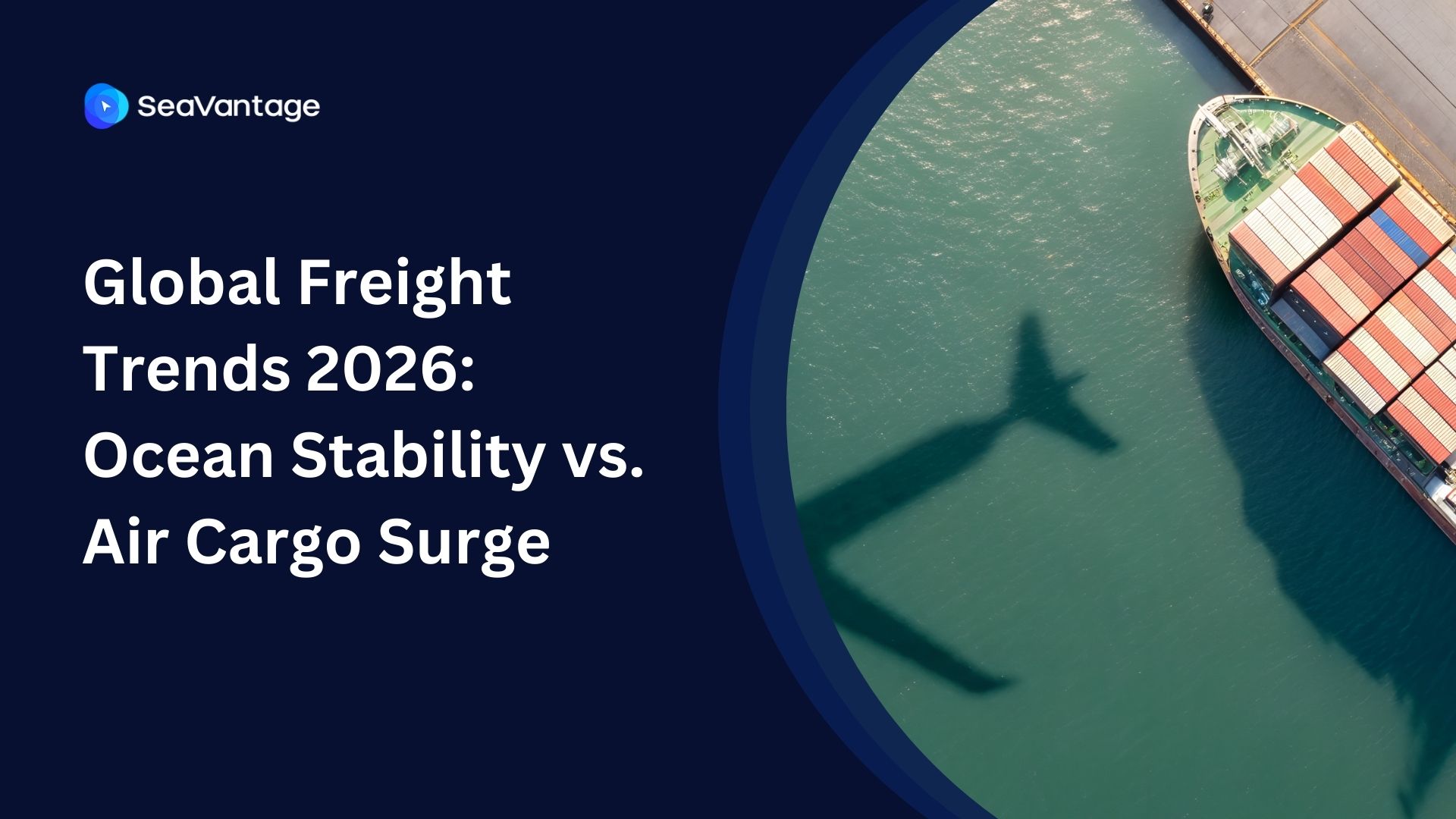October 2025 Port Efficiency Rankings | Global Dwell Time Insights
A Data-Driven Review of Port and Carrier Efficiency
Port dwell time has become one of the most closely watched metrics in global shipping. In 2025, as maritime trade adapts to post-pandemic recovery and accelerating digital transformation, the ability to move vessels efficiently through major ports remains a defining factor of competitiveness.
This report presents a detailed analysis of October 2025 dwell time data collected from leading global ports, including Antwerp, Busan, Jebel Ali, Long Beach, Los Angeles, Rotterdam, Shanghai, and Singapore.
The insights highlight performance gaps, identify top-performing carriers, and illustrate how technology continues to reshape port operations.
Click Here to View the Interactive Report
Global Dwell Time Overview
Key Findings
- Ports with High Wait Times (Above 40 hours): 6
- Longest Recorded Dwell: 220.5 hours by Evergreen Line at Rotterdam
While some ports achieved near-perfect turnaround times, others struggled with congestion, weather-related delays, or scheduling inefficiencies.
Port-by-Port Performance
Antwerp (Belgium)
The Port of Antwerp displayed notable variation in both waiting and working times during October. Waiting times ranged from 0 to 117 hours, while working times varied between 19 and 86 hours.
UniFeeder recorded the fastest processing with no waiting time, while COSCO Shipping faced the longest delays.
The data reflects Antwerp’s strong infrastructure capacity but also the uneven scheduling among major carriers. Strategic berth management remains critical for consistent efficiency.
Busan (South Korea)
Busan once again demonstrated its status as a global model for operational efficiency. Every major carrier reported zero waiting time throughout October.
SITC and SM Line completed working operations in approximately 12 to 14 hours, while MSC recorded slightly longer working durations near 32 hours.
The results underscore the success of South Korea’s automated terminal initiatives and predictive vessel scheduling systems, which continue to set the global standard for port management.
Jebel Ali (United Arab Emirates)
Jebel Ali maintained steady performance, with an average waiting time of 5.2 hours and working times typically between 25 and 30 hours.
Maersk achieved the best results with no waiting time and an 18-hour working average. HMM Co. Ltd, however, recorded a total dwell time of nearly 50 hours.
The port remains a vital logistics hub linking Asia, Europe, and Africa, but the data indicates opportunities to further streamline carrier coordination and berth allocation.
Long Beach (United States)
At the Port of Long Beach, vessels experienced some of the longest working times globally. Across major carriers, the average exceeded 70 hours.
HMM Co. Ltd recorded 134 hours of working time, while Yang Ming reached 142 hours in total dwell duration.
Despite ongoing digital modernization, high cargo volumes and labor scheduling constraints continue to challenge this key North American gateway.
Los Angeles (United States)
The neighboring Port of Los Angeles followed a similar pattern, with working times typically ranging from 95 to 120 hours.
CMA CGM performed best with a working time of 62 hours, while HMM Co. Ltd reached a peak dwell time of 163 hours.
Joint operational programs between Los Angeles and Long Beach, such as the SmartPort optimization initiative, are expected to reduce vessel delays in the coming quarters.
Rotterdam (Netherlands)
Rotterdam presented one of the widest dwell time ranges in the dataset, from 0 to 107 hours of waiting time.
Evergreen Line recorded both high waiting and working durations, totaling over 200 hours combined. By contrast, BG Freight reported excellent performance with 12 hours of working time and no delay on arrival.
The congestion experienced in Rotterdam suggests potential ripple effects for interconnected European logistics networks.
Shanghai and Ningbo (China)
China’s major container ports maintained balanced operations through October.
In Shanghai, Maersk and Sinotrans achieved dwell times between 13 and 17 hours on average. Ningbo reported slightly higher figures, with FESCO and Sinotrans experiencing waiting periods exceeding 25 hours, largely attributed to storm-related disruptions.
Overall, the data reaffirms the resilience of China’s port infrastructure and the benefits of continuous automation investments.
Singapore
The Port of Singapore continued its strong record of consistency, showing zero waiting time for most carriers.
COSCO Shipping and Maersk demonstrated excellent performance, while MTT Shipping reported a brief waiting time of 17.8 hours.
Singapore’s use of AI-driven berthing systems and real-time logistics coordination remains a benchmark for global port efficiency.
Expert Perspective
“Port dwell time analytics has evolved from an operational metric into a strategic business tool,”
notes SeaVantage Senior Maritime Data Analyst.
“The ability to monitor and predict dwell performance directly influences profitability, sustainability, and customer confidence.”
Conclusion
As global trade flows stabilize, the focus on dwell time analytics will only intensify.
Understanding how each port and carrier performs provides valuable insight for logistics planning, cost reduction, and customer service improvement.
Businesses seeking to enhance decision-making through real-time maritime data should consider using advanced analytics platforms such as Dwell Time BI, designed to visualize and forecast port performance with precision.
External References
2025년 9월, 주요 글로벌 항만에서 어떤 운송사가 가장 긴 선박 체류 시간을 기록했는지 확인해보세요. 트렌드를 비교하고, 지연을 파악하며, 전체 항만 데이터를 통해 운송 전략을 최적화할 수 있습니다.
2025년 8월, 주요 글로벌 항만에서 어떤 운송사가 가장 긴 선박 체류 시간을 기록했는지 확인해보세요. 트렌드를 비교하고, 지연을 파악하며, 전체 항만 데이터를 통해 운송 전략을 최적화할 수 있습니다.
2025년 7월, 주요 글로벌 항만에서 어떤 운송사가 가장 긴 선박 체류 시간을 기록했는지 확인해보세요. 트렌드를 비교하고, 지연을 파악하며, 전체 항만 데이터를 통해 운송 전략을 최적화할 수 있습니다.
iscover the 4 critical ocean freight trends for 2026, from the Red Sea reopening and fleet overcapacity to shifting global trade maps. Prepare your supply chain now.
Discover key 2026 freight market trends: Port of Houston expansion, air cargo "super peak," and ocean freight stability. Plan your supply chain with SeaVantage.
Explore November 2025 global port dwell time data. See which ports and carriers led in efficiency across Antwerp, Busan, Long Beach, Rotterdam, and Singapore.



.svg)





.jpg)

.png)